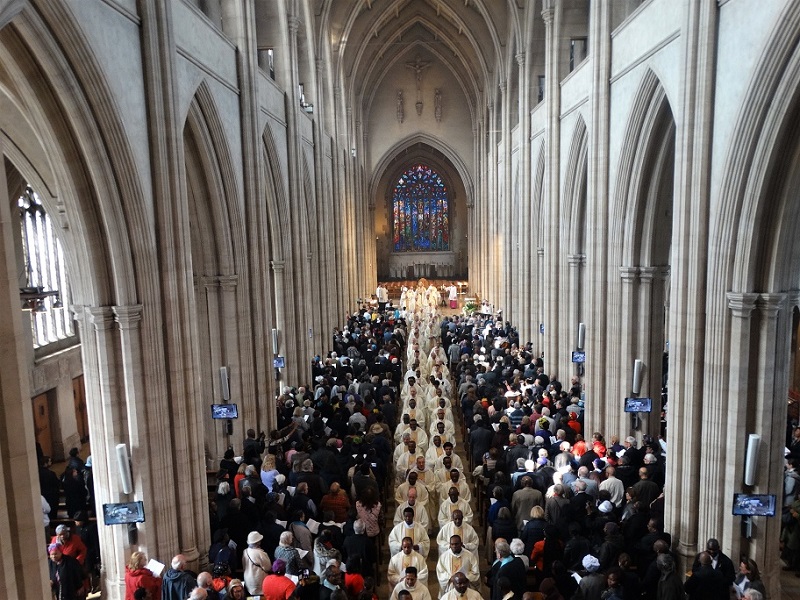
An archbishop who raised money for the refurbishment of an ageing cathedral has died.
During Michael Bowen’s time as Archbishop of Southwark, he ran a successful appeal for a £5million refurbishment of St George’s Cathedral.
Many high profile events took place there as a result, including concerts and graduations for the students of London South Bank University.
The money he raised helped secure the architectural features of the 171-year-old building, much of which had been destroyed during the Blitz in 1941.
When Pope John Paul II visited in 1982 on his six-day UK visit, it was Archbishop Michael who suggested the seven sacraments should be the theme of his trip.
As archbishop, he was able to reorganise secondary schools in South London and managed to create its first sixth form college.
Britain’s highest-ranking Roman Catholic cleric at the time, Cardinal Cormac Murphy-O’Connor, said: “He has been a true teacher and guide to his flock, a man who has led with certainty and humility, and served well the people and priests of his archdiocese.”

His other major contributions during 26 years in the post until 2003, were the challenge of implementing the reforms of the Second Vatican Council and introducing new structures for the Archdiocese of Southwark.
A statement from the diocese said: “He will be remembered both as a gentleman and a gentle man.
“He would always go out of his way to thank people after confirmations and parish visitations.”
Born in Gibraltar on April 23, 1930 he grew up in Wimbledon. He was educated at Downside School.
When he was 10, his father, a major in the Army, was killed in action in Norway during the Second World War. His mother remarried in 1945, to Sir Paul Makins.
He began his studies for the priesthood at the Venerable English College in Rome
in 1952.
He gained theology and philosophy degrees from the Gregorian University and was ordained in Rome on July 6, 1958.
His first post was as a curate to St Gregory’s, Earlsfield. In 1960 he moved to The English Martyrs, Walworth, where, in the evenings, he taught at St Augustine’s House, a hostel for working men who were thinking about the priesthood.
In 1963, with the Second Vatican Council under way, he returned to Rome to teach theology at the Beda College.
He came back to England in 1966 to become Chancellor of the newly-established Diocese of Arundel and Brighton.
In 1970, he was consecrated coadjutor bishop for the diocese of Arundel and Brighton. The following year, on June 27, after the death of Bishop David Cashman, he was made the diocesan bishop.
As a result of the Second Vatican Council, the 1970s were marked by changes and new ideas in the church.
